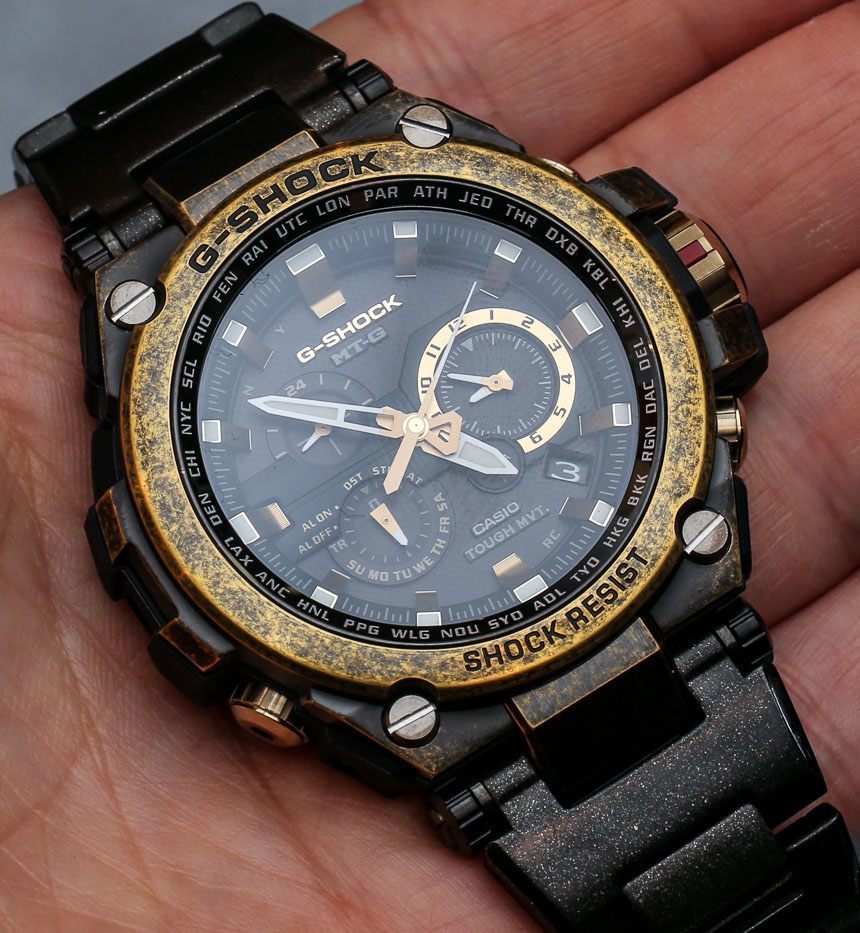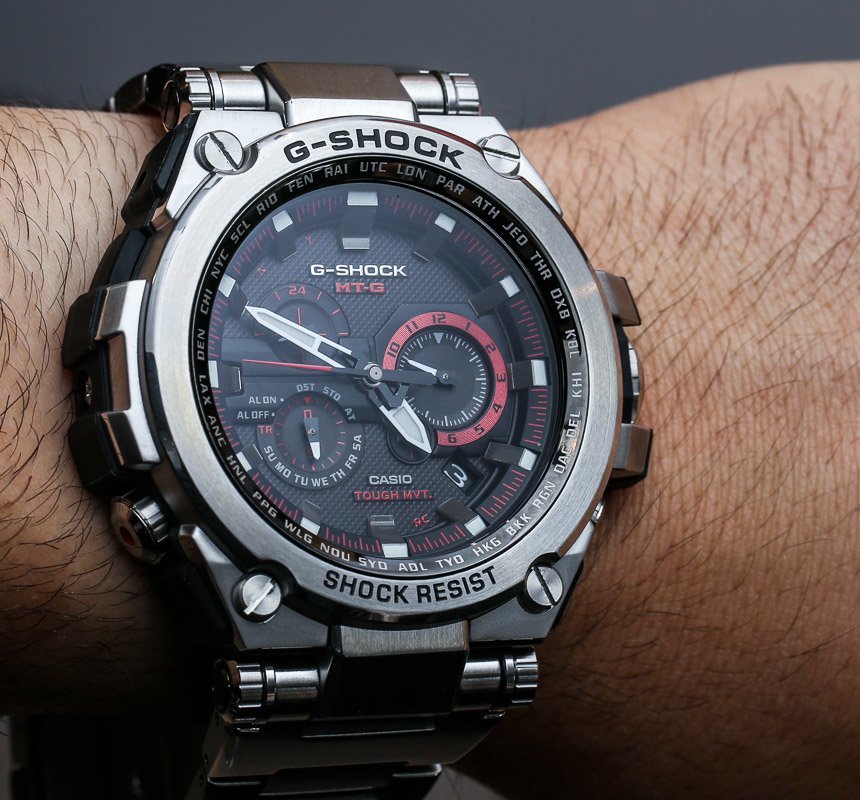
I recently brought you news of the new for 2014 Casio G-Shock MR-G MRG-G1000 watch, which is a $3,000 G-Shock with all the bells and whistles Casio
has developed to date for its high-end analog-dialed G-Shock watch collection. If the MR-G is to be the ultimate halo-product for the G-Shock sub-brand of Casio, the Casio G-Shock MT-G is its still pricey, yet much more affordable counterpart. In some ways, I actually prefer the cool case design and pivoting lug structure of the Casio G-Shock MT-G over the MR-G MRG-G1000 watches that will arrive a bit later 2015.
The Casio G-Shock MT-G is here now, and the newest generation MTG-S1000 (in Japan – American reference numbers are slightly different) collection models are the first official high-end metal Casio G-Shock watches that are officially available in the US as well as much of the rest of the world. I spoke a bit about Casio’s strategy of wanting to offer a product to the many people who love G-Shock but can’t see themselves wearing a plastic digital watch all the time or with more business attire. With an attractive yet technical analog dial with metal case and bracelet, the MT-G is hoped by Casio to be the G-Shock that will transcend into realms of lifestyle and fashion that no “ordinary” G-Shock was previously allowed to go. It is true, when I wear a G-Shock it is a very private experience, because I know how totally durable and capable the watches are. At the same time, I won’t wear one to a place where watch guys might be or to a social gathering that is anything but purely casual.
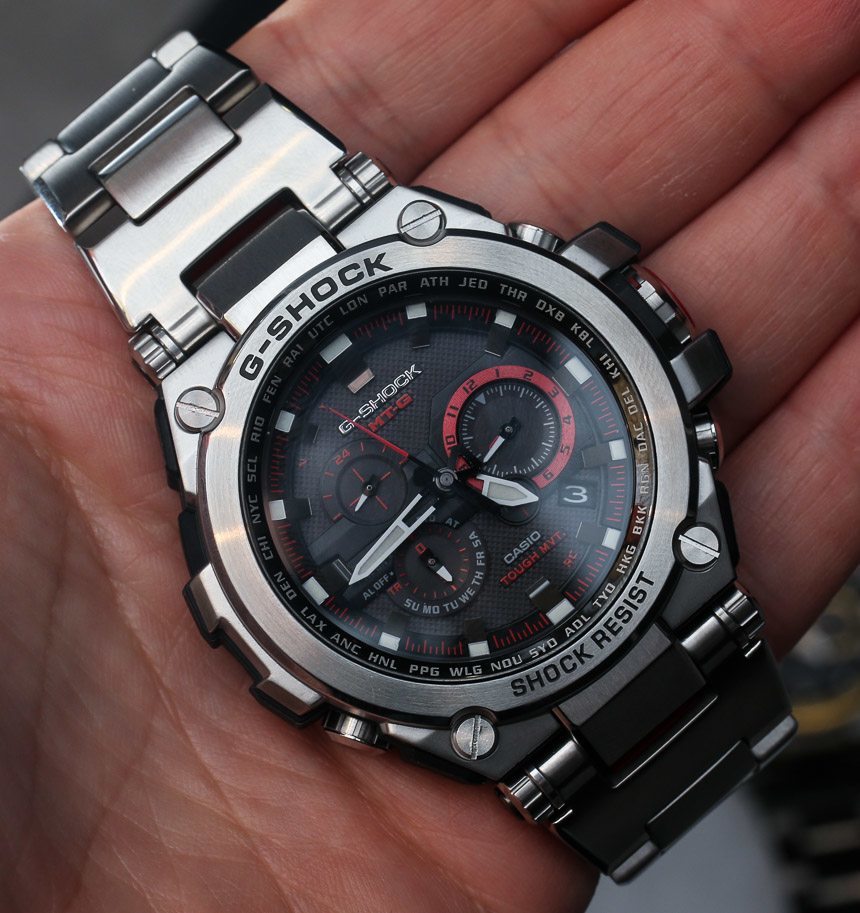
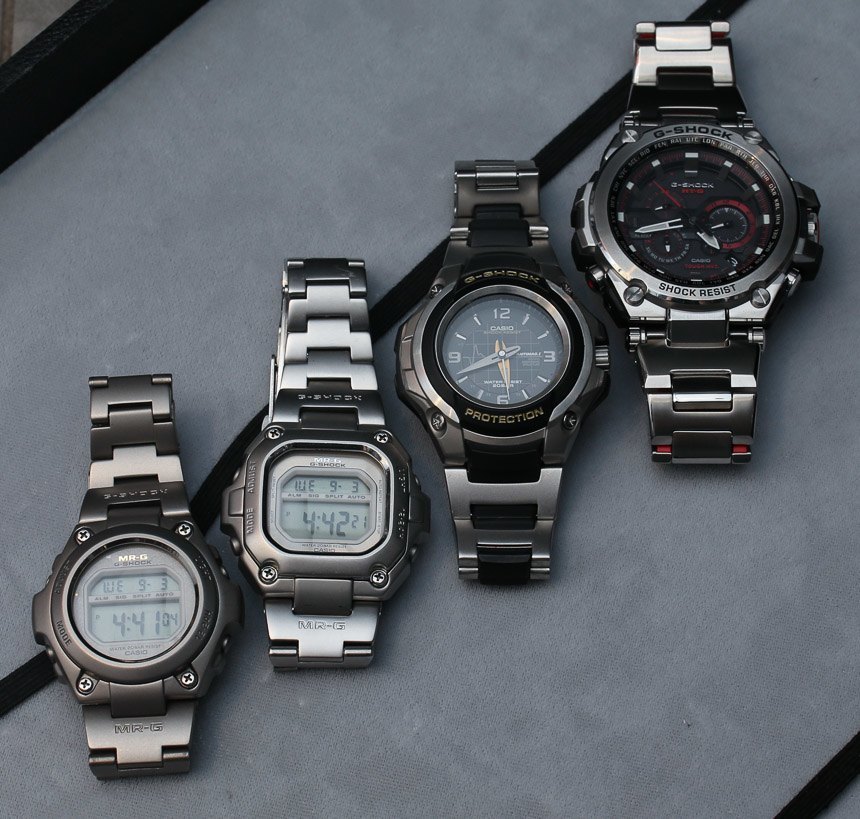
I’ll ask the same question here as I did with the MR-G, would you wear an MT-G out with a suit or more formal attire? What about to social gatherings, to meetings, or on dates? I think the answer will depend on the person. The Casio G-Shock MT-G is really the anti-Swiss watch. The modern, complex design with its computer-generation inspired technologically-friendly case is the exact opposite of the restrained, conservative, more traditional persona that most high-end Swiss watches attempt to emulate.
Casio’s decision to stand behind analog as the face of high-end quartz is a business decision motivated by the fact that most high-end watches sold have analog dials. When digital watches were new over 30 years ago it was cool to have a digital dial, but only for a fleeting moment until the mid 1980s or so, when digital watches became the face of the casual sport watch.
G-Shock watches can be found with purely digital, hybrid “ana-digi” dials which mix screens and hands, as well as purely analog dials. Casio engineers have struggled to meet the durability and functional demands of a G-Shock with the prospect of having to work with hands. In a sense, it is a step backwards, but developments like the “Tough Movement” which can realign hands that move out of position due to shock, and the “Smart Access Crown” which makes adjusting the time and other settings more simple, have made analog dial G-Shock watches much better.
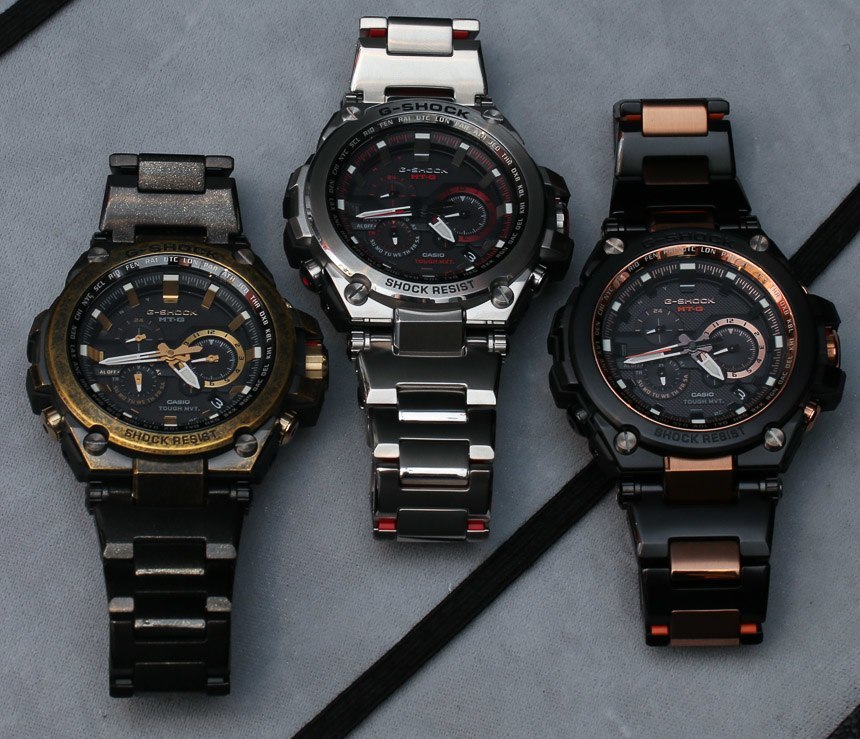
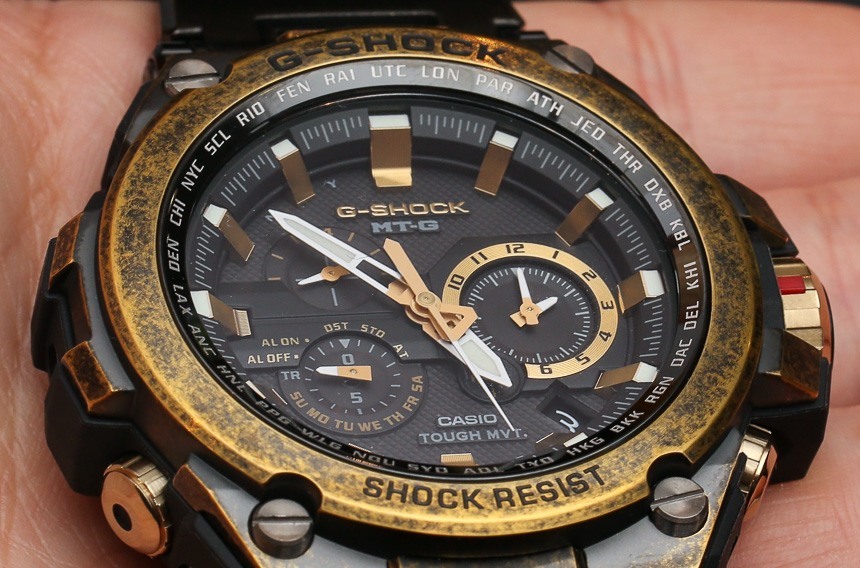
Even though I fully admit that in many instances G-Shock watches look more attractive in a mainstream way with analog dials, I feel that they are a step backwards in regard to functionality and simplicity in comparison to digital screen dials. So in a sense, G-Shock went “analog” for vanity – you simply can’t win when wanting something ultra durable and sexy, it seems.
OK, now I sound like some type of digital purist, and that isn’t the case. I suppose it is still a strange thing for me to match my love of analog dials – which normally come with mechanical movements – with quartz movements. The Casio G-Shock MT-G MTG-S1000 collection of watches do a lot, and the Casio caliber 5369 “Tough Solar” quartz movement is an impressive little beast. In addition to light power generation and connecting to the world’s six atomic clock radio signals to update the time, the watch features a 1/20th of a second chronograph, countdown timer, alarm, dual time mode, and calendar.
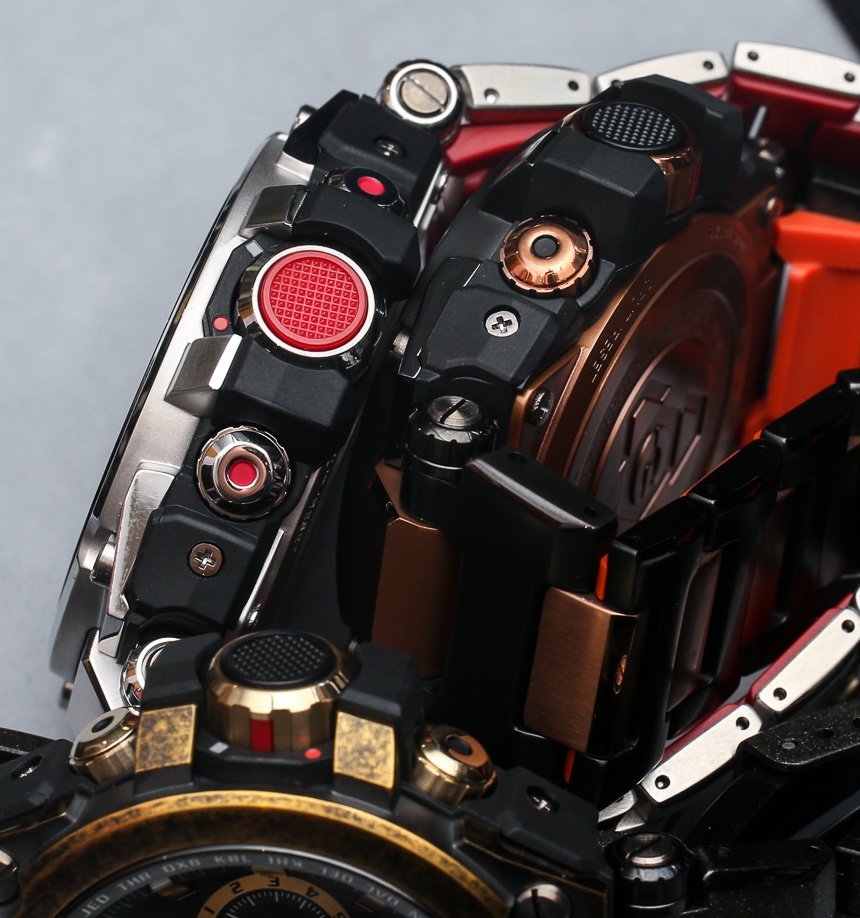
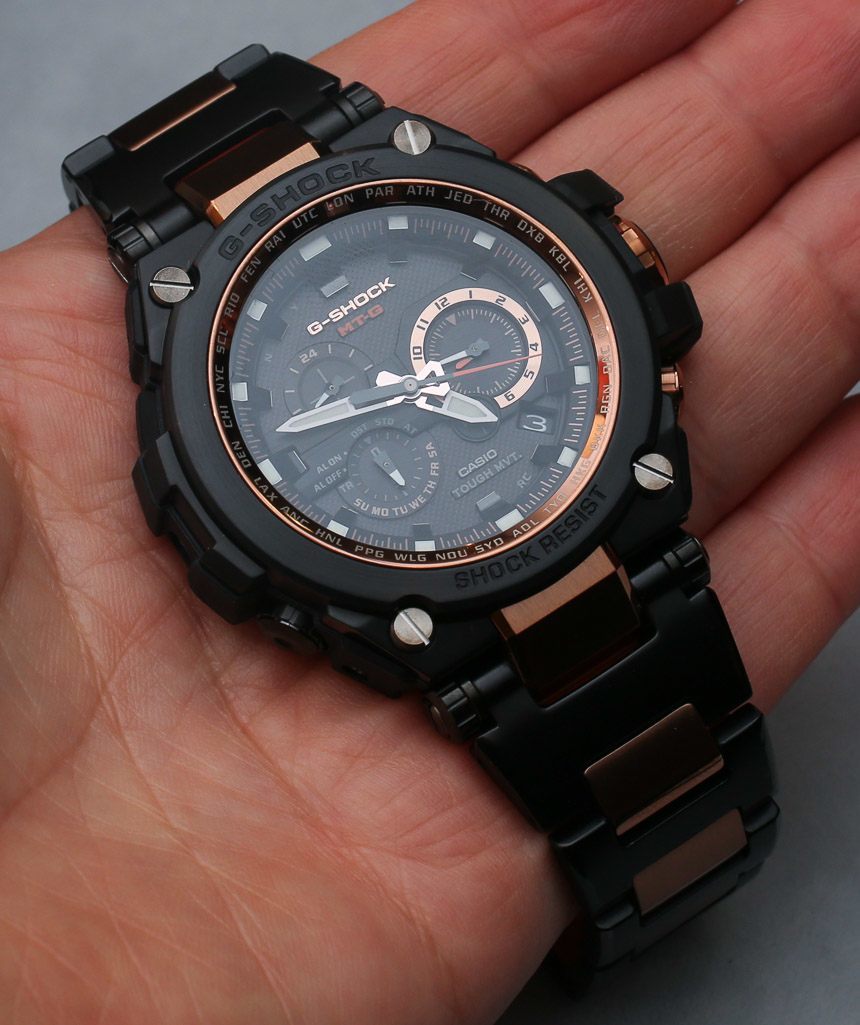
Compared to early analog G-Shock watches, pieces like the new Casio G-Shock MT-G are a breeze to use, but all the functions won’t be as easy to use or precise to read as if the dial were digital. Also, there is a strict learning curve to understanding how its analog watches work for the first time – and I personally don’t feel it is intuitive enough. Good thing that Casio drafts decent instructions; the PDF for the 5369 module movement is only eight pages long. It has helpful pictures too.
Casio is keen to attract a more stately, mature audience with its priciest G-Shock watches so I don’t think digital versions are coming anytime soon, but I personally would be keen to see a few be released. I have a feeling if anyone can match an awesome digital screen with the MTG-S1000 case design it is going to be Casio.
A name that you’ll be hearing more and more from Casio in the upcoming years is “Yamagata.” It is the name of Casio’s more high-end production facility that they refer to as the Yamagata manufacture or factory. There, Casio’s “premium styles” are produced, including its high-end G-Shock watches such as the Casio G-Shock MT-G, MR-G, and others such as the GPW1000 Solar Atomic GPS watch. The Yamagata factory is better set up for precision manufacturing, which is important since the more high-end G-Shock watches have really complicated cases and movements with a lot of parts. I saw a break down of the parts used for the Casio G-Shock MT-G and it was impressively complex.
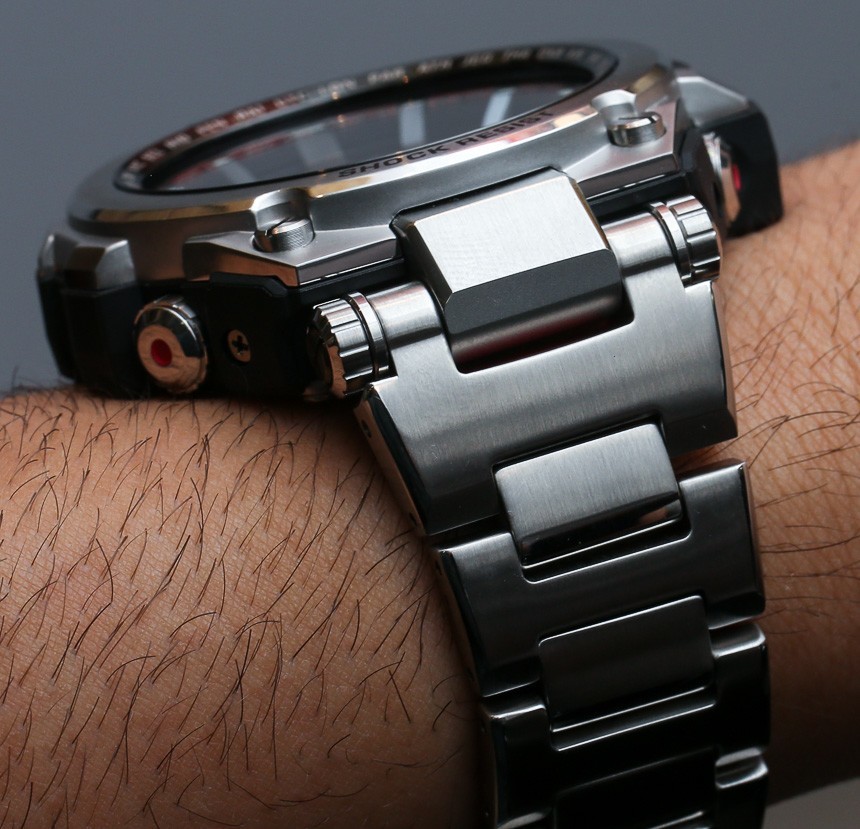
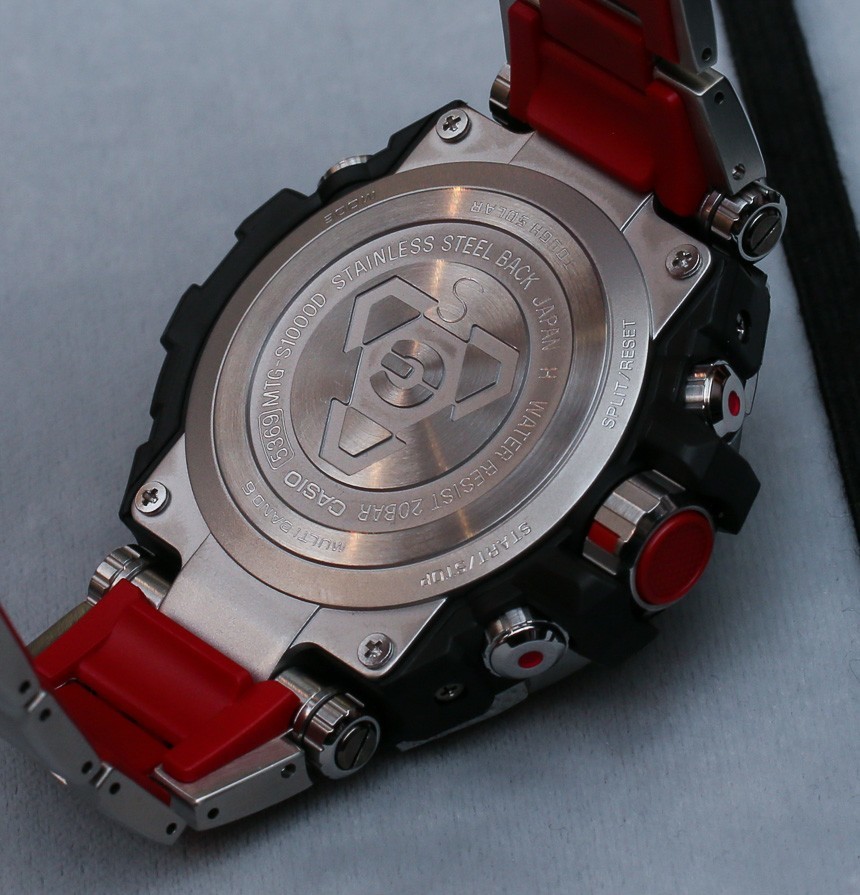
The biggest challenge with a metal G-Shock case is the ability to retain its shock resistance qualities. Plastic (also referred to as “resin,” when people want to get fancy and illustrate more quality stuff), works great for standard G-Shock watches because it can absorb so much shock. Shock moves through metal much more, so it is a terrible material for a shock resistant watch. Thus, Casio uses resin and a material they created called Alpha Gel in the case as buffer zones. Some of this is visible, and other parts are not. The resin is also used at the back part of the bracelet. Casio makes a big deal out of it by coloring it brightly on some models. Some people love this, and others do not (both the material and the bright coloration). I don’t mind it, and I do have to say that it allows the watches to be really comfortable, and never too cold or too hot. It also allows the bracelet to wear more snugly.
The sort of triangular logo on the rear of the Casio G-Shock MT-G case is a special symbol used on most of the high-end G-Shocks called “Triple G Resist.” It means that the watch is specially resistant to 1) shock, 2) vibration, and 3) centrifugal force (high velocity). Like most Casio G-Shock watches the MT-G pieces are water resistant to 200 meters, and as a high-end G-Shock, they have AR-coated sapphire crystals. On the wrist, these are a bit larger than the MR-G watches and sized at 53.5mm wide. That is large, but the full articulating lugs on the special (more or less unbreakable) tube pivots are great for allowing the watches to grip your wrist securely.
